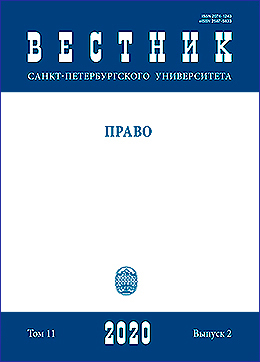Contactless sale of drugs and psychotropic substances by means of the Internet: Judicial practice of the Kemerovo region
DOI:
https://doi.org/10.21638/spbu14.2020.207Abstract
In the article, the materials of the developing judicial practice on the contactless sale of drugs and psychotropic substances by means of the Internet are investigated. The authors consider the insufficiently studied criminal and criminological aspects of the stated problem. The methods of selective observation, statistical analysis and a method of generalization of collected material were employed in the research. Biographical details, statistical data from the portal of legal statistics of the State Office of the Public Prosecutor of Russia, more than 400 court sentences, materials of criminal cases and pre-investigation checks were used as an empirical base. In the work the problems of qualification for contactless sale are characterized by the difficulties of procedural proof and the use of imperfect technical means for recognizing the means of sale are considered. In particular, the conducted research has led to the conclusion that a law enforcement official can only detect SMS-, MMS-messages and the usage of electronic payment service providers that do not represent specific difficulties in detection and procedural fixing. Not less widespread actions presently, such as such as the creation and use of bot networks, intermediate “false” servers and special online stores are not recognized and, as a result, are not relevantly reflection in procedural documents. This circumstance prevents the establishment of an objective truth because it does not entail the imputation of such a qualifying element as the sale of drugs via the Internet. In the article, statistical data characterizing the dynamics of growth of illegal sale through the Internet around the country is provided. The indicators across Kuzbass, demonstrating the inability of law enforcement to reveal all the possible ways of contactless sale are separately provided. In this regard, the authors offer various approaches to interpreting the means of contactless sale that will allow law enforcement to react to the emergence of new ways of sale in a timely manner.
Keywords:
crime, contactless sale of drugs, criminal qualification, Internet network, DarkNet, problems of proof, proof
Downloads
References
Downloads
Published
How to Cite
Issue
Section
License
Articles of "Vestnik of Saint Petersburg University. Law" are open access distributed under the terms of the License Agreement with Saint Petersburg State University, which permits to the authors unrestricted distribution and self-archiving free of charge.






